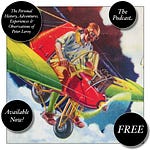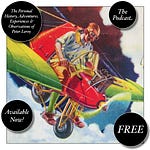5
THAT’S HOW I came to be standing in a locker in the unfinished school building, in the heat of an August night, still and silent and happy and thrilled. The thrill of danger, the possibility of being caught, wasn’t the only thrill. Prowling through the unfinished school building had made me begin to feel a thrilling anticipation of seventh grade that in memory is so thoroughly mixed with the thrill of danger that I can’t quite tell them apart.
My hopes for a new school year had never been greater. I always felt an anticipatory thrill before a new school year, the anticipation of novelty. According to what I’d heard from older, bigger, wiser kids, the novelty of seventh grade was greater than that of any previous grade. I would find it newer than new, as the advertisements for soap, cars, television sets, and dog food used to promise in those days. There was one note of disappointment in all this pleasant anticipation, though. With the opening of the Purlieu Street School, there would be room for everyone again, and we would return to normal conditions. It would be the end of split session. I would be going to school for a full day, ending at three in the afternoon. I would miss Flo and Freddie.
The building in which I expected to experience all that thrilling novelty was located just a block from my house, in what had once been a pleasant field where ragweed and goldenrod grew so high that my friends and I used to wriggle through it for hours (or for what in an adult’s memory of a child’s pastime seems like hours), just wriggling randomly, in sinuous paths, invisible to one another, to see how often our paths crossed. Like all the other school buildings built during this period, the heyday of school-building, it was low and rambling, made of cinder blocks with a veneer of beige brick on the outside, and like the cars built in the same period, it was bigger than the previous model and had more gadgets. Among the Purlieu Street School’s gadgets were a public-address system and amazing folding bleachers worthy of “Fantastic Contraptions.” Raskol and I began by picking up bits of scrap outside the building, but one day we found an open window—or perhaps it was a window that we could open—and from then on we spent more time investigating the building than we did harvesting scrap.
A building that’s a-building is a greater pleasure than a building that’s a building: its mysteries are exposed, and yet they are still intriguing, still complicated, no less mysterious for their being exposed than a woman is less mysterious naked than dressed. With Raskol I spent many a late afternoon and Saturday in the school-in-progress, wandering through its mysteries, our adventures spiced by the presence of a watchman, something of a mystery himself, who roamed the cavernous shell apparently at random. His coming was announced by a laughable clamor—jangling keys, scraping feet, a hacking cough, a pause, a thorough blowing of his nose—so by the time he arrived we were invisible, hiding in lockers, in heating ducts, or behind stockpiles of mysterious stuff. At night this game was even better. The watchman carried a long flashlight that projected a powerful beam, in which great looming shadows of school furniture and builders’ supplies arose suddenly from nothing, dashed along a wall, collapsed, and rose again, a beam that leaped across a corner, raced toward the place where I hid, hurtled past me, even, as now in memory, across the very door of this locker, through the louvers and onto my face, but the watchman missed seeing me, always missed seeing me, and lumbered on, ignorant of my existence. Hiding from the watchman was a delectable game, tingling with the possibility of our getting into some real trouble if he caught us, effervescent with the fact that he never did, that we always won. As Raskol and I understood this game, we were the only players. In our minds, we were everything: the center of the contest and all its area and edges as well. The watchman was just a dupe. When he had passed and we came out of hiding, we would wink at each other, deliver ourselves of theatrical sighs, and laugh silently at his ineptitude, but we never noticed what, with the finer perception memory sometimes supplies, I hear quite clearly now—the watchman’s jolly chuckle, receding with his footsteps.
[to be continued]
In Topical Guide 574, Mark Dorset considers Anticipation; Hope; Memory; and Misunderstanding from this episode.
Have you missed an episode or two or several?
You can begin reading at the beginning or you can catch up by visiting the archive or consulting the index to the Topical Guide. The Substack serialization of Little Follies begins here; Herb ’n’ Lorna begins here; Reservations Recommended begins here; Where Do You Stop? begins here.
You can listen to the episodes on the Personal History podcast. Begin at the beginning or scroll through the episodes to find what you’ve missed. The Substack podcast reading of Little Follies begins here; Herb ’n’ Lorna begins here; Reservations Recommended begins here; Where Do You Stop? begins here.
You can listen to “My Mother Takes a Tumble” and “Do Clams Bite?” complete and uninterrupted as audiobooks through YouTube.
You can ensure that you never miss a future issue by getting a free subscription. (You can help support the work by choosing a paid subscription instead.)
At Apple Books you can download free eBooks of Little Follies, Herb ’n’ Lorna, and Reservations Recommended.
You’ll find overviews of the entire work in An Introduction to The Personal History, Adventures, Experiences & Observations of Peter Leroy (a pdf document) and at Encyclopedia.com.














Share this post